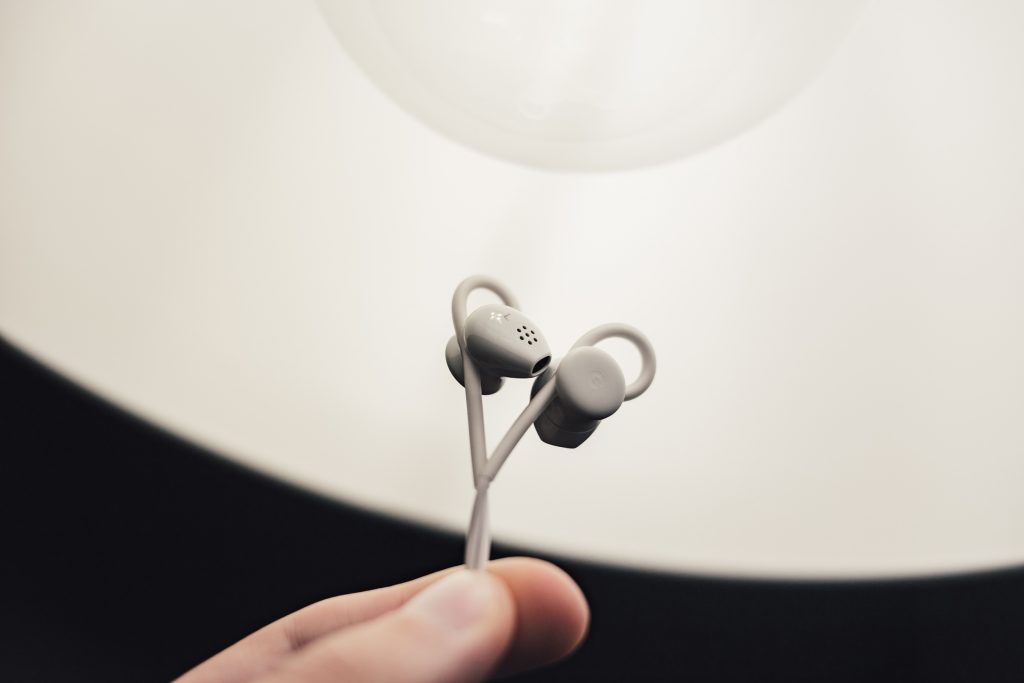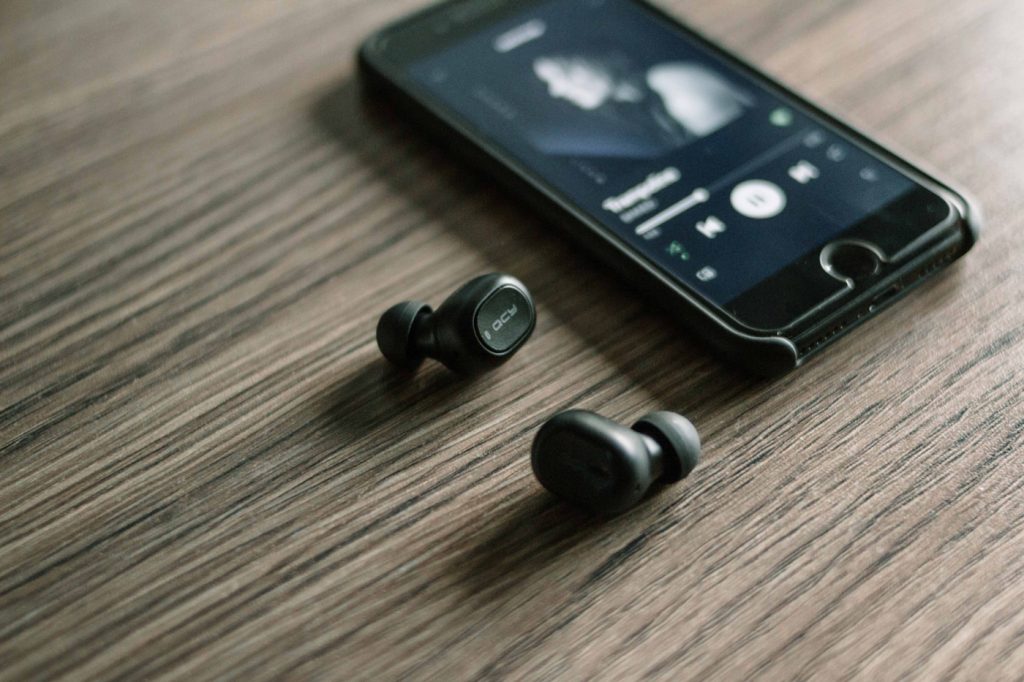Latest News
How to choose the right headphones
By |
14th July, 2021 |
Categories:

When you’ve spent so much effort choosing the perfect mobile phone, it’s easy to forget how important accessories like headphones are. But that would be a big mistake.
From making calls to playing games and listening to the latest tunes, having a great set of headphones is a must if you want to get the best out of your phone.
Whatever your listening needs, our headphones buying guide will help you to decide which set to purchase. Don’t leave it to chance, read our guide today!
But before getting deep into the world of high tech audio, it’s important to first arrange insurance for mobile phones to protect your phone itself.
After all, if your new phone gets damaged, lost or stolen then it won’t matter how great your headphones are! Call the team of insurance specialists at Gadget Cover today and get your phone and its accessories covered.
What type of headphones are right for you?
The very first decision you’ll want to make is which style of headphones is right for you. There are a number of different types worth considering, all with different pros and cons.
In-ear headphones
Also known as earbuds or earphones, these are perhaps the most popular type of headphones, often included in the box as standard alongside any new phone.
Small and lightweight they fit directly into the ear. Many now use silicone or memory foam to adapt to your ear shape and provide the best fit.
Very portable, easy to store and available at a range of price levels they are often used by frequent travellers, commuters and those who like a soundtrack during exercise. As with most gadgets, you get what you pay for.
Budget options won’t be the most powerful and they probably won’t match the performance of a comparably priced set of over-ear headphones.
However, there are some incredible deals to be had throughout the year. You never know when premium in-ear headphones will drop to a more affordable level, especially during events like Black Friday.

On-ear headphones
These are a great option if you don’t want the bulk of over-ears but something more substantial than compact in-ears.
Available in many different styles, they all feature flat, cushioned ear pads that sit on, rather than over or in, your ears. This means they’re better for maintaining awareness of your surroundings while still delivering excellent sound.
While they’re relatively compact and won’t take up too much space when travelling, they also feature a headband that makes them feel more secure.
This is particularly useful during exercise. Also, many people, particularly those with sensitive ears, find them more comfortable for wearing over extended periods.
Over-ear headphones
If you’re looking for fully immersive sound and superior audio quality then a pair of over-ear cans will be at the top of your phone accessory shopping list.
As the name suggests, these headphones feature large cups that fit over your ears. They offer great noise cancellation and plenty of space for large powerful drivers. Connected by a padded headband they also offer comfortable listening for many hours.
The only downside is they tend to be heavier and bulkier than other options so aren’t as convenient to carry. However, for audiophiles who plan to get out of the studio, there are plenty of options with iconic designs and eye-catching colours!
Wireless headphones
All of the above wired models are great for most situations, including work and leisure. However, if you want more flexibility and want to avoid those annoying wire tangles, then opting for a wireless version could be the answer.
Whether in-ear, on-ear or over-ear all can come as wireless. All are battery-powered and use Bluetooth to connect to your music equipment. Check out what the top Bluetooth earphones are for your mobile phone.
While on-ear and over-ear wireless models simply lose the wire, on-ear add a neckband to link the two earbuds together.
That is unless you opt for True Wireless earbuds that you can wear in each ear without a connecting wire. Some people love the freedom this brings, while others just worry about losing their expensive kit.

All the best features worth listening out for
Noise cancellation
If you want to make your music sound better and cut out annoying background noises then noise cancellation tech is what you’ll want to invest in.
Noise cancellation works by having tiny microphones built into the headphones. These then produce signals that cancel out outside noises. Creating an oh-so-immersive experience even in the loudest of environments.
This makes them particularly popular among travellers, commuters and those in busy households or offices.
They’re also of great benefit for ear health as they allow you to enjoy clear audio without having to turn the volume up too high. No more blasting your eardrums to drown out loud train conversations!
Be aware that you might come across headphones offering noise reduction or noise isolation. These don’t use digital signal processing to cancel noise. Rather they simply block sounds using a seal on the earbud or padding on the ear cups.
Water resistance
Headphones are certainly not indestructible and can be prone to water damage. If you think you might be wearing your headphones outdoors or during exercise look for a pair that provides protection from rain and sweat.
If you’re after straightforward water resistance then look for pairs with an IP rating of IPX4 or above. However, some will even be protected from water while swimming. So, if you want to listen to your favourite podcast while eating up lengths then opt for a waterproof pair with a rating of IPX8 or above.
Drivers
Probably the most important component in a pair of headphones is the driver unit. It is responsible for converting electrical impulses into sound – it’s essentially a loudspeaker in your ear!
There are several different types and sizes of drivers found within headphones that can have a big effect on performance. The larger the driver, the more air is displaced as they vibrate, and the more powerful the sound (particularly in the bass/sub-bass region).
That’s why the larger drivers found in over-ear headphones (say around 40mm and up) tend to be louder than those found with in-ears (around 6mm). That doesn’t mean that over-ears are better headphones than in-ears, it really depends on what you’re looking for.
Design
Sound is king, of course, but design aesthetics is a very important consideration when it comes to headphones.
Whether you’re looking for the sophisticated, minimalist cool of the Sony WH-1000XM4, the iconic beauty of the Apple AirPods or the eye-catching statement Beats Solo Pro there’s sure to be a style to match anyone’s taste.
Weight is also a factor to be taken into account. 10 or 20 grammes may not seem much to begin with but over an extended listening session, or if you’re playing sports, it can soon make a difference.
And if you’re using them for sports or running, a secure fit is essential, too. Look out for design features such as wingtips, differently sized ear tips, and ear hooks.
Built-in mic for calls
A handy feature to look out for if you often make hands-free calls, is a built-in mic. This means that if a call comes through via Zoom, Skype, FaceTime or WhatsApp you’ll be prepared wherever you are.
From work conference calls to video catch-ups with your mum, your life will be so much easier with a built-in mic. They'll bump up audio quality, maintain privacy and help you hear every word clearly.
Battery life
While not a factor for wired headphones, this is important for any wireless options as they’ll need their own power source. After all, headphones can sound great, but that doesn’t matter if they give up halfway through your journey, especially during your favourite track!
The batteries in the best wireless headphones can last anywhere between seven and 40 hours on a single charge. However, the amount of battery life you’ll get will depend on listening volume and whether you’re using power-hungry noise cancellation.
For over-ears, you should be looking for at least 20 hours of playback. For True Wireless earbuds, anything above five hours is good. Remember that with a wireless charging case, battery life can be extended several times over.

How much should you pay for headphones?
From a few pounds to a few hundred, headphones can come in a vast range of prices depending on what you’re after. If you’re looking for a decent pair of noise cancelling headphones then you’ll often get what you pay for – the best pairs rarely come cheap.
In terms of must-have gadgets for remote working, our favourite pair of headphones, the Sony WH-1000XM4, come in at around £270. While the equally desirable Apple AirPods Max will set you back a cool £549.
But if you’re tempted by the low, low prices of some lesser-known brands on internet shopping sites, then take care. Obviously, the fact you’ve never heard of a brand doesn’t automatically mean they’ll be rubbish. Equally, the fact they have hundreds of rave reviews doesn’t mean you won’t be sorely disappointed.
The website of consumer champion Which? is a great place to start if you want to get an objective view on some of the best headphone deals.
If you arrange mobile phone insurance through Gadget Cover then policies can also cover the replacement of any accessories (up to £150) if they are lost, stolen or damaged at the same time as your gadget.
How to care for your headphones
If you care enough about your listening pleasure to invest in a decent pair of headphones then you should care enough to take good care of them.
If you don't, their sound performance will soon deteriorate and may even lead to a breakage. Help your headphones stay in excellent condition for longer with these top 10 care tips:
- When you first buy your headphones, always read the manual or quick start guide before use.
- Store your headphones in a clean, dust-free environment like a case. Don’t expose them to extreme temperatures.
- Use a soft, dry cloth to clean your headphones. Avoid harsh cleaning products or solvents.
- Watch the volume. Not only can this damage your ears but it could also damage the sensitive drivers if you’re not careful.
- Pull out the headphone jack, not the cable. Wrenching the cable out of your phone is a sure-fire way to damage your headphones over time. Instead, grip and gently pull out the headphone jack instead.
- Unplug your headphones when not in use. Likewise, if you leave the headphones attached to your phone it’s all too easy for the cable to be pulled out and for damage to occur.
- Don’t fall asleep with your headphones on. We know how easy it is to do, but you can easily bend or snap them if you roll over in your sleep. It’s not great for ear health either.
- Avoid bending the wires unnecessarily. Clearly the wires are designed to withstand bending but over time this can lead to damage if you’re not careful.
- Avoid sharing them with other people. With the ever-present need to stop infections being passed between people it’s better to stick to your own set of headphones.
- Never carry them in your pocket. Not only can wires become tangled but dust and other debris will soon collect and damage sound quality.
Arrange mobile phone insurance with Gadget Cover
Gadget Cover’s team of insurance specialists will always be there to help find you the right mobile phone insurance policy to take care of your tech.
Policies arranged through Gadget Cover can include protection for your device from accidental damage, liquid damage, theft, breakdown and unauthorised usage. For an extra premium, we can also provide cover against loss.
If you’re taking your phone abroad, cover is automatically extended to include use of your phone anywhere in the world, up to 180 days in any one year. Mobile phone insurance can also cover your immediate family in case they lose or damage your phone.
Get a mobile phone insurance quote from Gadget Cover today.
Policy benefits, features and discounts offered may very between insurance schemes or cover selected and are subject to underwriting criteria. Information contained within this article is accurate at the time of publishing but may be subject to change.


